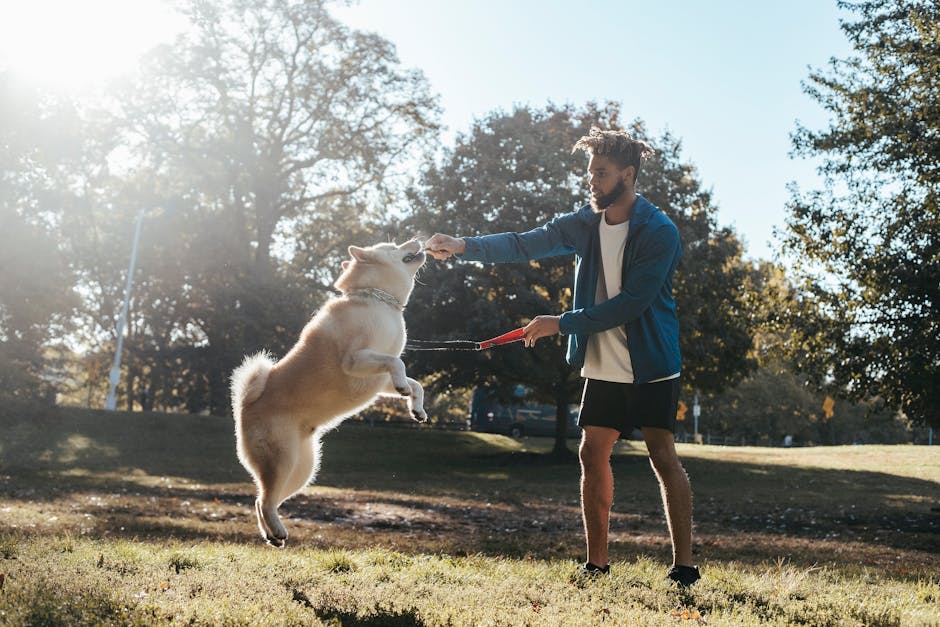Importance of protection dog training
Protection dog training is crucial for shaping your dog into a reliable protector. Well-trained protection dogs can provide security for your home, family, and belongings. Proper training helps dogs develop skills to recognize potential threats, deter intruders, and remain obedient in high-pressure situations. A trained protection dog not only offers protection but also enhances the bond between you and your pet. Investing time and effort in guard dog training can significantly improve your overall security.
Understanding protection dog behavior
Protection dogs are trained to protect their owners and property by recognizing potential threats and reacting accordingly. Understanding protection dog behavior involves knowing how these dogs are trained to be alert, obedient, and responsive to commands that signal danger. Here are some key points to help you grasp protection dog behavior:
- Protection dogs are bred and trained for specific traits like loyalty, intelligence, and courage.
- They are taught to differentiate between normal and suspicious behavior, responding with a bark, growl, or other warning signs.
- Proper socialization is crucial to prevent aggression towards non-threatening individuals.
- Training techniques focus on reinforcing positive behaviors and discouraging negative ones.
- Consistent practice and reinforcement are essential to maintaining a protection dog’s skills and behavior.
Basic commands for protection dogs
When training protection dogs, it’s essential to start with basic commands that form the foundation of their protective skills. Here are some key commands experts use to prepare protection dogs:
- “Sit”: This command teaches the dog to sit on command, which can be useful to control their behavior in different situations.
- “Stay”: Teaching the dog to stay helps to keep them in a specific position until they are given further instructions.
- “Watch”: This command prompts the dog to focus on a specific target or person, enhancing their alertness.
- “Come”: Training the dog to come when called is crucial for situations where immediate response is needed.
- “Leave it”: This command teaches the dog to ignore distractions or potential threats, helping them stay focused on their protective duties.
Mastering these basic commands is a fundamental step in preparing a guard dog for their protective role.
Introduction to protection dog training techniques
Protection dog training techniques are essential to prepare your canine friend to protect you and your home. These methods focus on teaching your dog to recognize threats and respond effectively. Experts use positive reinforcement, obedience training, and socialization to develop a well-rounded protection dog. Consistency and patience are key in this training process.
Selecting the right breed for protection dog training
To choose the best breed for guard dog training, consider factors like size, temperament, and intelligence. Look for breeds known for being protective, loyal, and trainable. German Shepherds, Doberman Pinschers, and Rottweilers are some popular choices for guard dog training due to their natural instinct to protect and their ability to learn commands quickly. Make sure to pick a breed that suits your lifestyle and living situation – one that you can handle and train effectively. Taking the time to select the right breed is crucial for successful guard dog training.
Building trust and rapport with your protection dog
To build trust and rapport with your protection dog, spend time together in various activities. Engage in playful interactions and positive reinforcement training. Be consistent in your commands and reactions to establish a strong bond. Regular exercise and grooming help create a sense of security and familiarity between you and your dog. Remember, trust is key in forming a reliable protection dog.
Techniques for obedience training
Obedience training is crucial for a protection dog to follow commands reliably. Consistent practice is essential to teach your dog to obey commands such as sit, stay, come, and heel. Here are some techniques experts use for obedience training:
- Positive reinforcement, like treats or praise, for good behavior.
- Clear and consistent commands to avoid confusion.
- Regular training sessions to reinforce learning.
- Patience and perseverance to help your dog understand and comply with commands.
Implementing protective behaviors
Protection dog training aims to develop specific behaviors in your dog to protect you and your property effectively. One method used by experts is teaching your dog to bark on command. This helps your dog alert you of potential threats. Additionally, encouraging standing their ground is crucial for a protection dog to deter intruders. Another technique is socializing your dog to different environments and people, ensuring they are confident in various situations. By practicing scenarios where your dog needs to protect or alert you, they will become more adept at instinctively knowing when to act.
Training for alertness and response
Experts focus on training protection dogs to be alert and responsive to potential threats. They teach dogs to recognize danger signs and react swiftly to protect their owners. This training involves extensive practice sessions to enhance the dog’s ability to detect suspicious activities and respond effectively. Commands are used to instruct the dog on when to bark, remain vigilant, or take action. Developing a strong bond between the dog and its handler is crucial for successful training in alertness and response.
Practice and reinforcement in protection dog training
The key to successful protection dog training is consistent practice and reinforcement. Experts emphasize the importance of regular training sessions to reinforce the desired behaviors in protection dogs. Repetition is crucial in helping the dog learn and retain the training commands effectively. Incorporating positive reinforcement techniques such as treats, praise, and playtime can motivate the dog to perform well during training. Consistency in training methods and setting clear expectations are essential in ensuring that the dog understands its role as a protection dog.



